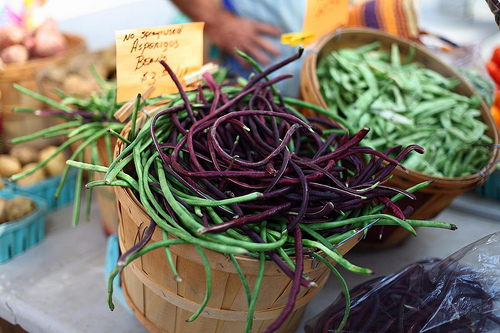Creating a Guilt-Free Table
by Terra Wellington | January 9, 2013

According to a recent American Hospital Association report, Americans are living longer but are more chronically sick, with troubling levels of obesity, diabetes, high blood pressure, and sedentary behavior. With this in mind, one of the wellness trends for 2013 is a focus on improving your quality of life.
A starter list of how you might boost your quality of life may include getting more exercise, eating a better diet, applying preventive healthcare tactics, reducing stress, and improving relationships with family and friends.
But in addition to the important health aspect of “better eating,” there is also a moral and ethical element that more and more people are considering: a movement to know where your food comes from and how it is made, so that you can create a guilt-free table.
Going “guilt free” is more than just embracing tactful portion sizes or an uptick of vegetables on your plate. It’s about eating with a clear conscience across the board, making food choices that are not only good for your own health and welfare but also good for the planet’s animals, water, soil, biodiversity, land, and farmers. This is a holistic view that ropes in a sort of karmic or stewardship-driven philosophy.
Guilt-Free Based on True Cost
In environmental circles, the idea of conscious eating is often talked about in terms of the true cost of food. Much of the food that the developed world eats today is mass produced, which often has hidden detrimental costs to the environment, to farmers, and potentially to our health and future world.
In fact, most sustainability activists would advocate that more food be sold based on its true cost—its cost to the environment and your health—so that people would be better informed and gravitate toward more sustainable and healthier eating choices. For example, the Sierra Club has released a helpful (though somewhat in-your-face) animation to explain what is meant by today’s true food cost.
Easy Tips for Conscious Eating
Here’s the good news. More and more food companies—both large and small—are hearing and responding to the rallying cry for more-sustainable operations and products. And the growing awareness and usage of “USDA Organic” and “Fair Trade” certifications, among other food eco-labels, are indicators that we are heading in the right direction.
To the extent that your budget and circumstances allow, guilt-free is mostly a choice—and choices are simply about education and action. You’ll want to incorporate a hearkening back to basics, a sense of responsibility not only to yourself and others but also to nature, and an optimistic dose of participating in local and regional economies.
Here are some simple tips to get you going:
1. Choose Organic
Whenever possible, choose organic produce and products. This is an easy way for your purchase to support cleaner water and soils, more-diverse and nature-friendly crop production, an improvement in farm and consumer safety due to no pesticides, and the elimination of genetically modified foods.
2. Honor People and Animal Welfare
Look for quality labels that would indicate a certified level of ethical welfare in how a food was raised, grown, or sold. For example, the Fair Trade Certified label indicates that farmers were justly compensated for their products. And the cage-free label for eggs conveys that the hens were not raised in battery cages, and has been proven to significantly decrease the risk of salmonella contamination in the eggs.
3. Go Sparingly on the Meat
When you eat less meat, you not only improve your health but also decrease the demand for meat. According to a December 2011 report from the United Nations, animal protein is being overconsumed in developed nations and continues to be a rising animal welfare and even human health concern. It also places a growing strain on the planet’s natural resources as well as having other significant environmental impacts such as water pollution and greenhouse gas emissions.
4. Support Smaller, Local Food Sources
Look for opportunities to purchase directly from the farmer when possible, such as from family farms at farmers markets, food cooperatives, and community supported agriculture (CSA) programs. Localharvest.org is a great resource for finding small, local food providers near you. Or, grow your own food—the ultimate local source.
5. Eat Seasonally
Even if you don’t have a farmers market or co-op nearby, moving toward seasonal eating often prompts more regionalized food options, promotes local diversity and economies, and reduces global fuel consumption. For help in learning what is in season in your area, the Natural Resources Defense Council’s Smarter Living site has an interactive map of “Produce in Season around the U.S.”, with a month-by-month list for each U.S. state.
No matter the extent of your choices, any guilt-free addition to your table is a win-win for you and the planet.
Terra Wellington has been a guest on such programs as Chicago’s WGN, The Daily Buzz, The Montel Williams Show, WCBS’ This Morning, and Martha Stewart Radio. She is the author of The Mom's Guide to Growing Your Family Green and the former wellness editor of Fit Body and Real. In addition to contributing to numerous magazines and websites, she’s an actress and mom. More at www.terrawellington.com and Twitter: @terrawellington.
(Photo courtesy of Flickr: Joanna C. Dobson)

